The cloister
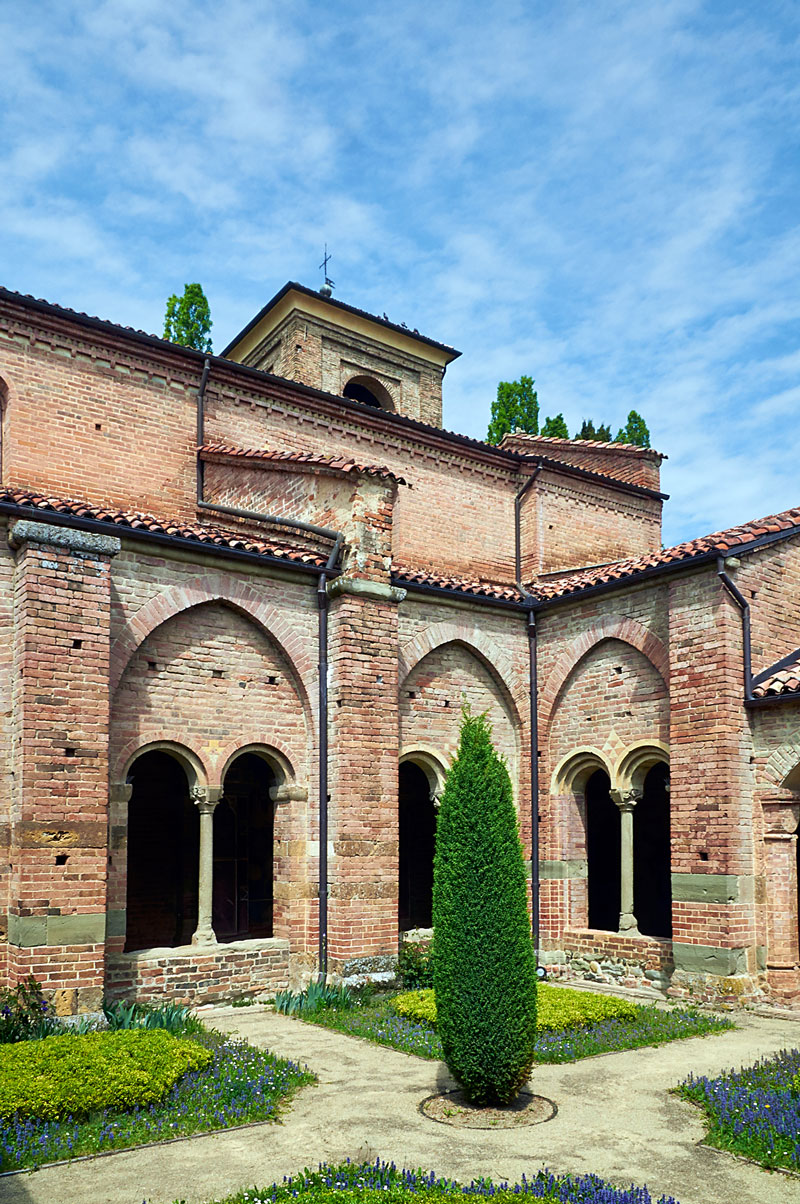
The cloister is the heart of monastic life. Its shape is square and it suggests meditation and quiet. All the other parts in the monastery point towards it.
Vezzolano cloister has two specific features. First, the four sides of the cloister were built in different periods. The oldest part is on the western side and dates back to the time of the building of the whole church (end of 12th century). The second-oldest part includes the northern section and some of the eastern section of the cloister which were given their present location in the 13th century. The remaining part of the eastern section and the southern section of the cloister were built later on.
Secondly, the northern section of the cloister is located where five of the six arches in the right-hand side nave should have been built.
Here an important series of frescoes can be seen dating from the middle of the 13th century to the middle of the 14th century. The identity of the authors is not known and their meaning is still being studied. Most likely it was a large burial area for important local families. There are no traces left of the burials. However, the frescoes testify to the strong relationship between the community of Vezzolano and the feudal powers of the time.
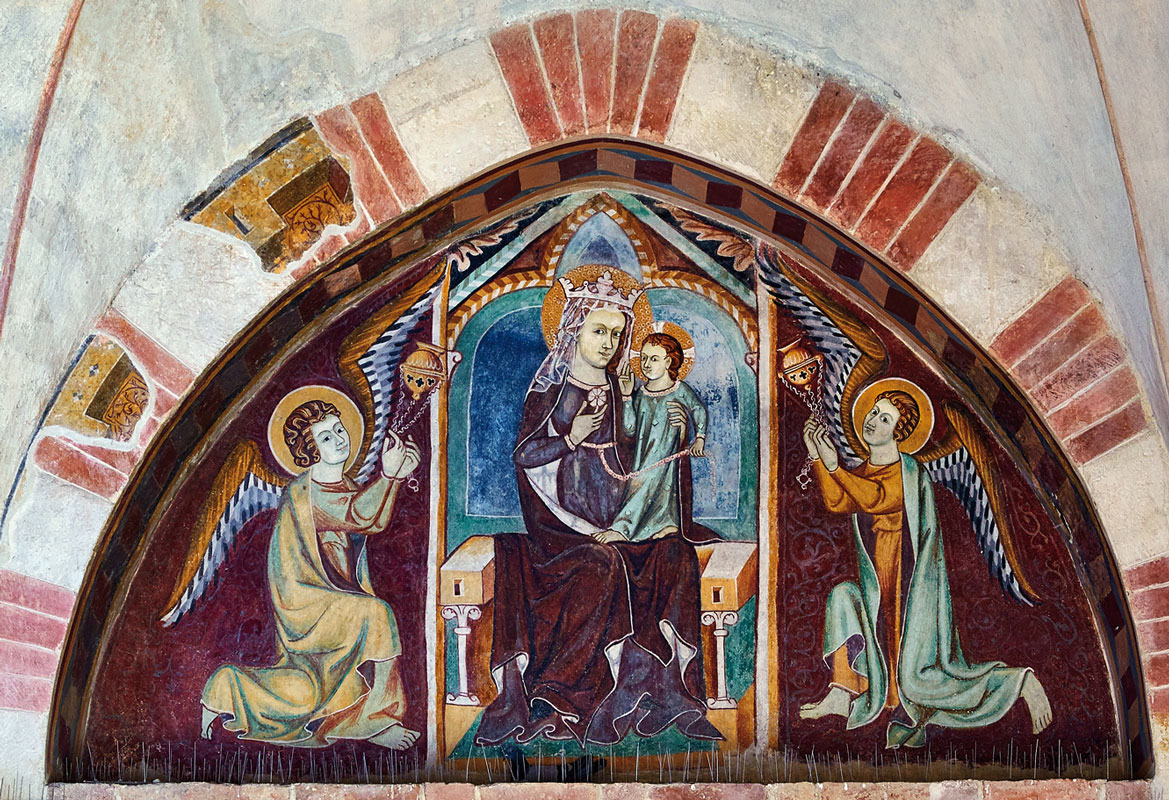
The first fresco on the door lunette leading to the church represents Mary on the Throne with the Child and Angels. The work was deeply influenced by the French style and dates back to the 14th century.
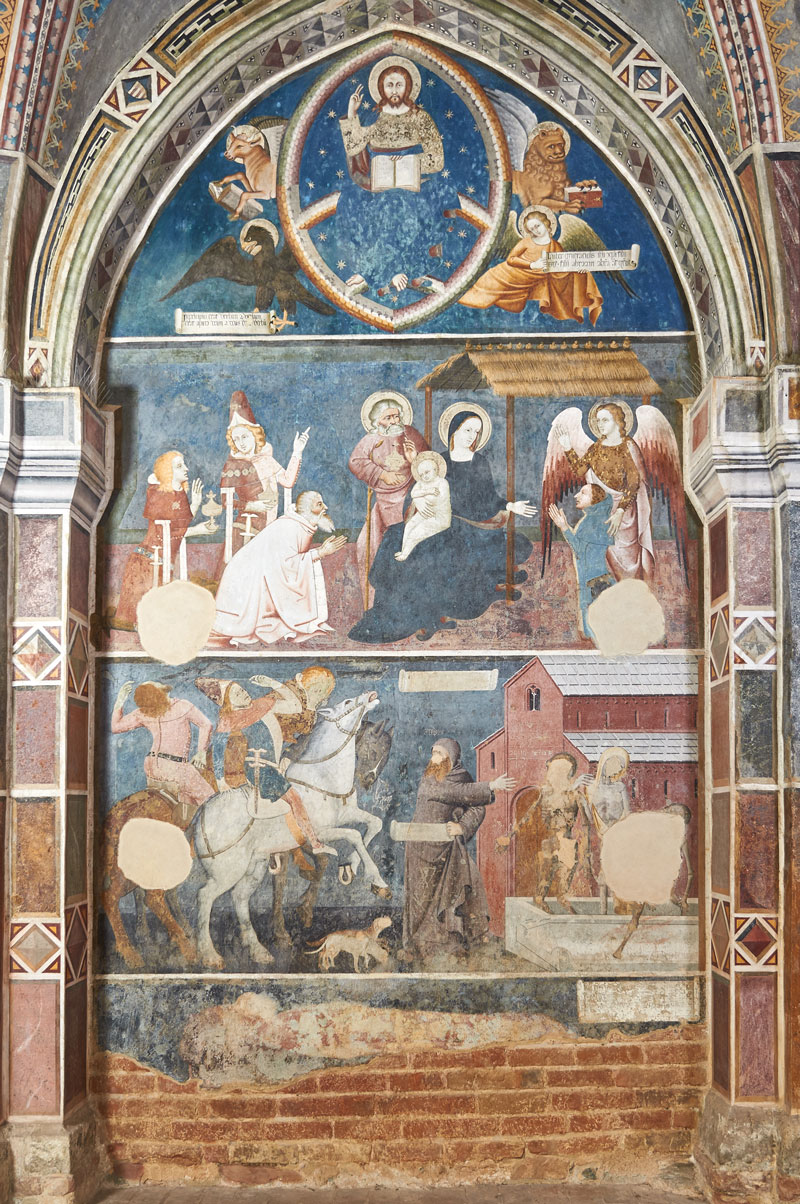
The frescoes on the arcade on the left hand-side of the door were commissioned by the Rivalba family who had political control on the area of Castelnuovo. The frescoes date back to the middle of the 14th century. The author, usually called Master of Montiglio, was influenced by Tuscan painters in his depiction of bodies with the chiaroscuro technique and in his use of the perspective. Several figures and scenes can be seen from bottom to top. We can see the picture of a dead man on his deathbed. Thanks to an inscription (today unreadable) the man can be identified as Oberto de Rivalba. We can see the scene of the meeting of the Three Living and the Three Dead teaching us to despise the vanities of life, such as elegant clothes and expensive hunting falcons which only lead to the silence of the tomb. We can see the Adoration of the Magi where the characters on the left are probably portrays of a noble local family. We can see Christ Pantocrator (Lord of all) among the Evangelists influenced by the Byzantine style. On the vault, Saint Gregory the Great is the only remaining Doctor of the Church. The pictures of Saint Jerome, Saint Ambrose and Saint Augustine were lost.
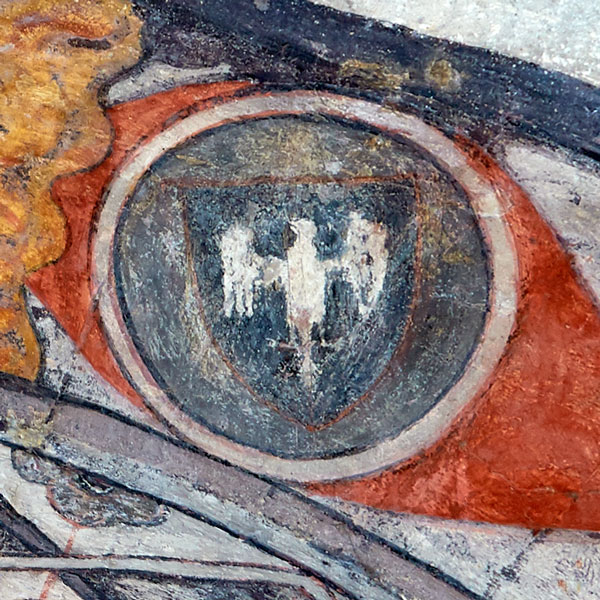
The crest of the de Radicata Consortium can be found on the three following arcades. The families belonging to the de Radicata Consortium were very important for the founding and the growth of the church of Vezzolano.
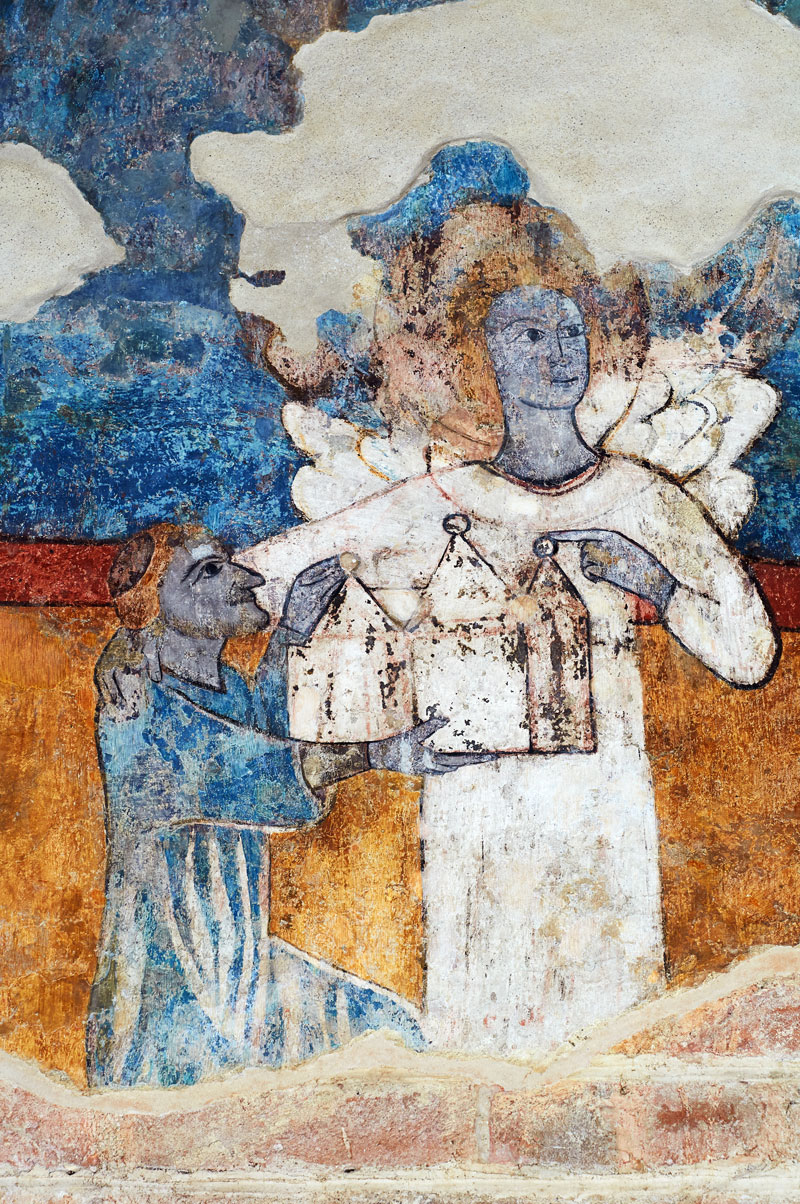
On the third arcade on the left hand-side is a character identified as Do(minus) Pet(r)us or Signor Pietro holding some relics. He is introduced to Mary and the Child by an Angel. On the right hand-side is a character identified as Augustinus (Saint Augustine). He is wearing bishop clothes and lifts his hand as a sign of blessing. At the top is the Lamb of God, Agnus Dei among angels.
Christ Pantocrator can be seen on the fourth arcade. The picture was damaged in the 18th century due to the building of some steps to the screen.
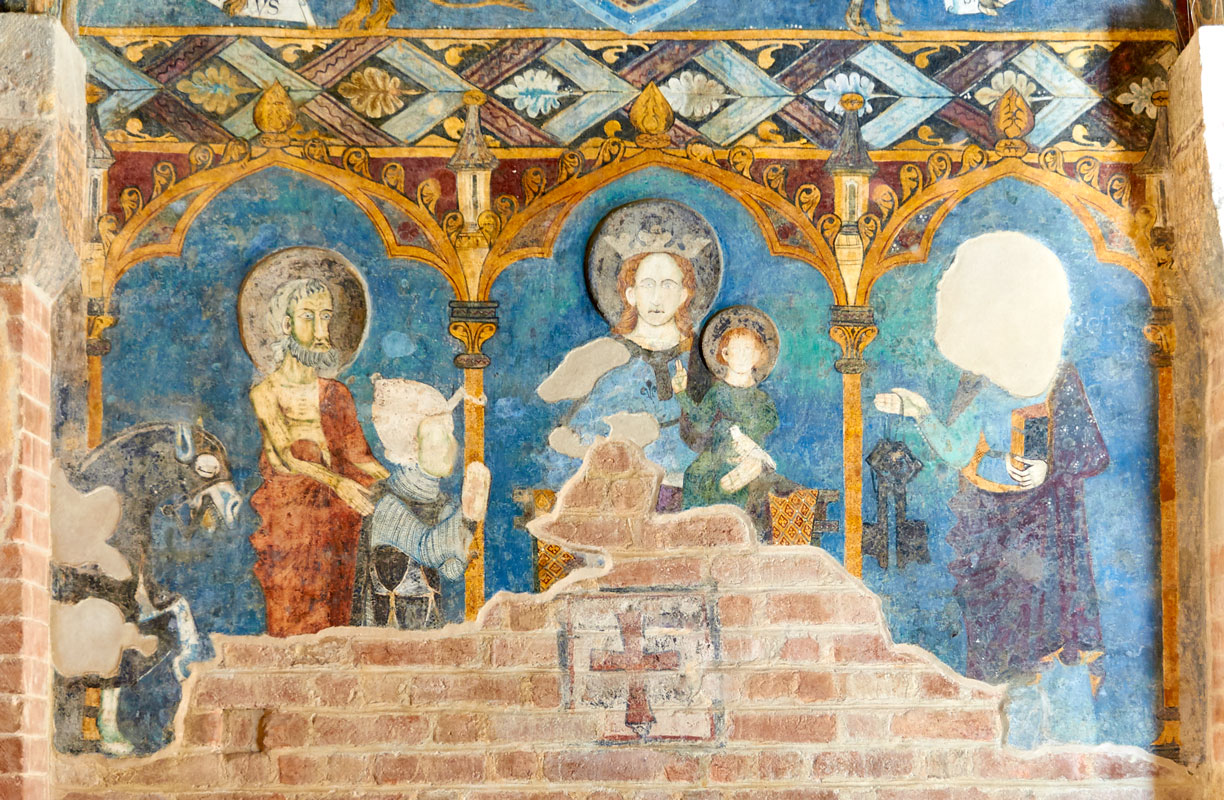
The fresco on the last arcade is the Madonna on the Throne with the Child with Saint Peter and Saint John the Baptist. John the Baptist introduces a man in arms kneeling and praying to the virgin. Thanks to the type of armour the fresco can be dated back to the 14th century. At the top is Christ Pantocrator and the Evangelists.
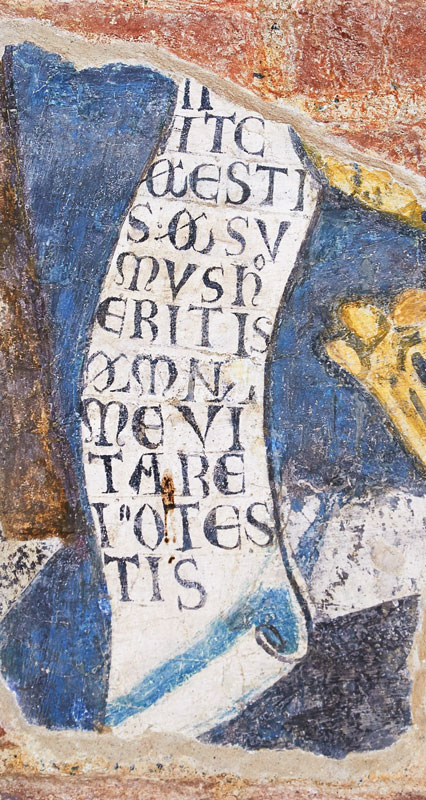
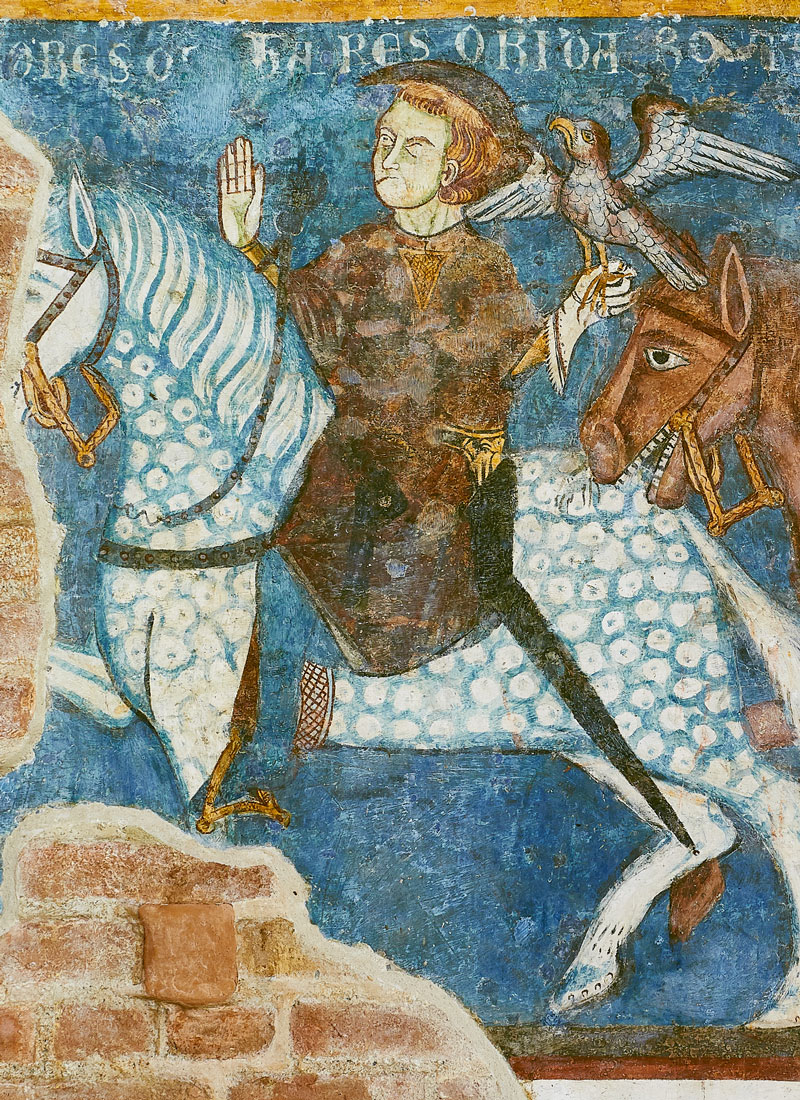
A different version of the scene of the Three Living and the Three Dead can be seen in the fresco on the wall at the back above a bricked up door. The figures are damaged but the inscriptions are well preserved. The knights raise their hands to the sky and say: Ha res orida et stupenda (oh, what a terrible and wondrous thing!). The answer of the Dead is almost complete: [Quid superbitis miseri] Pensate quod estis Quod sumus Hoc eritis Quod minime vitare potestis (Why do you make yourselves proud, poor creatures? Think about what you are now! What we are, you will be too. There is nothing you can do.) - the first line was suggested by 19th century historians.
The remaining frescoes are badly damaged.
The architecture and the decorative sculptures are very interesting, especially the columns and the decorated capitals. Some parts still show traces of the original colour.
English version: Cristina Mottura